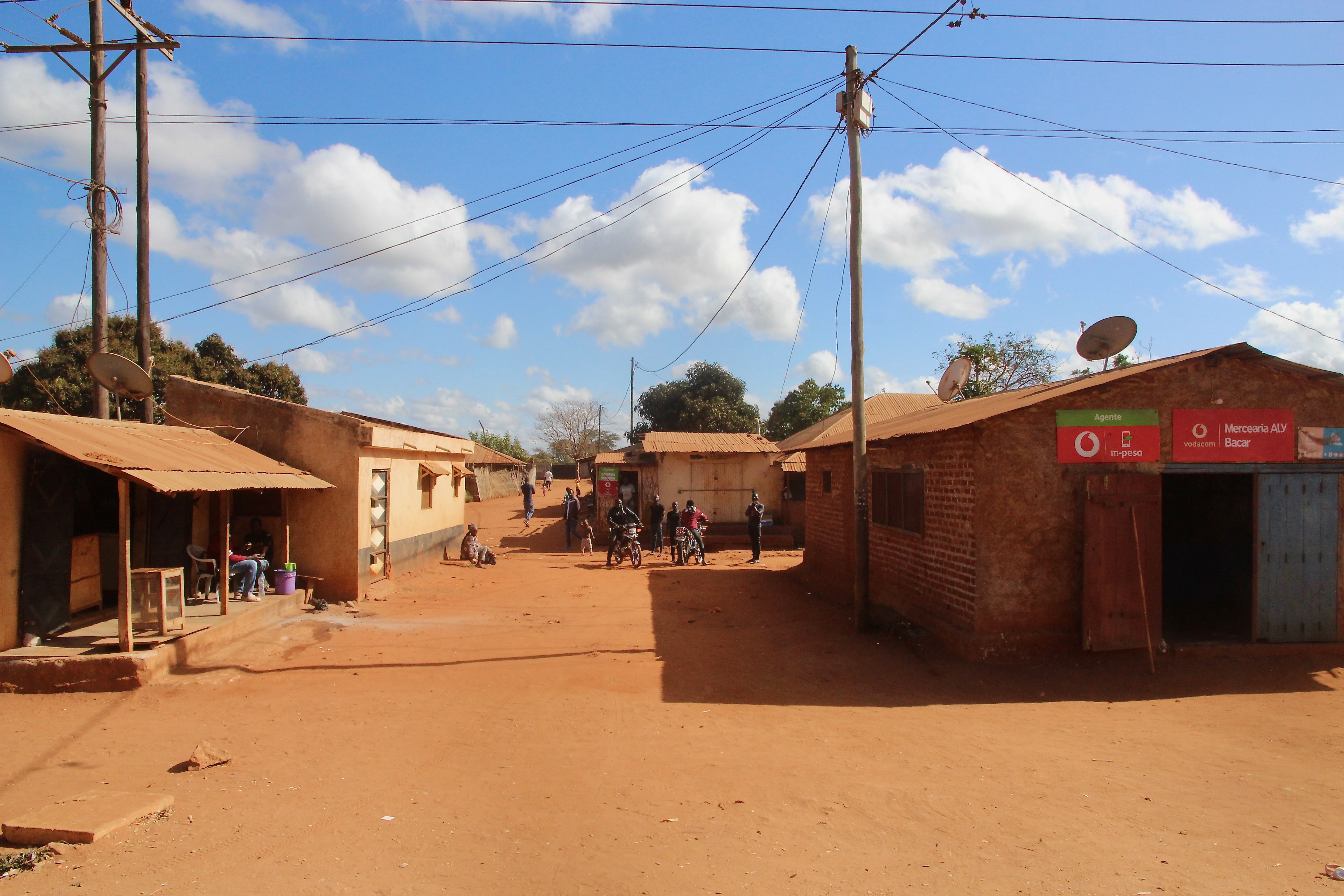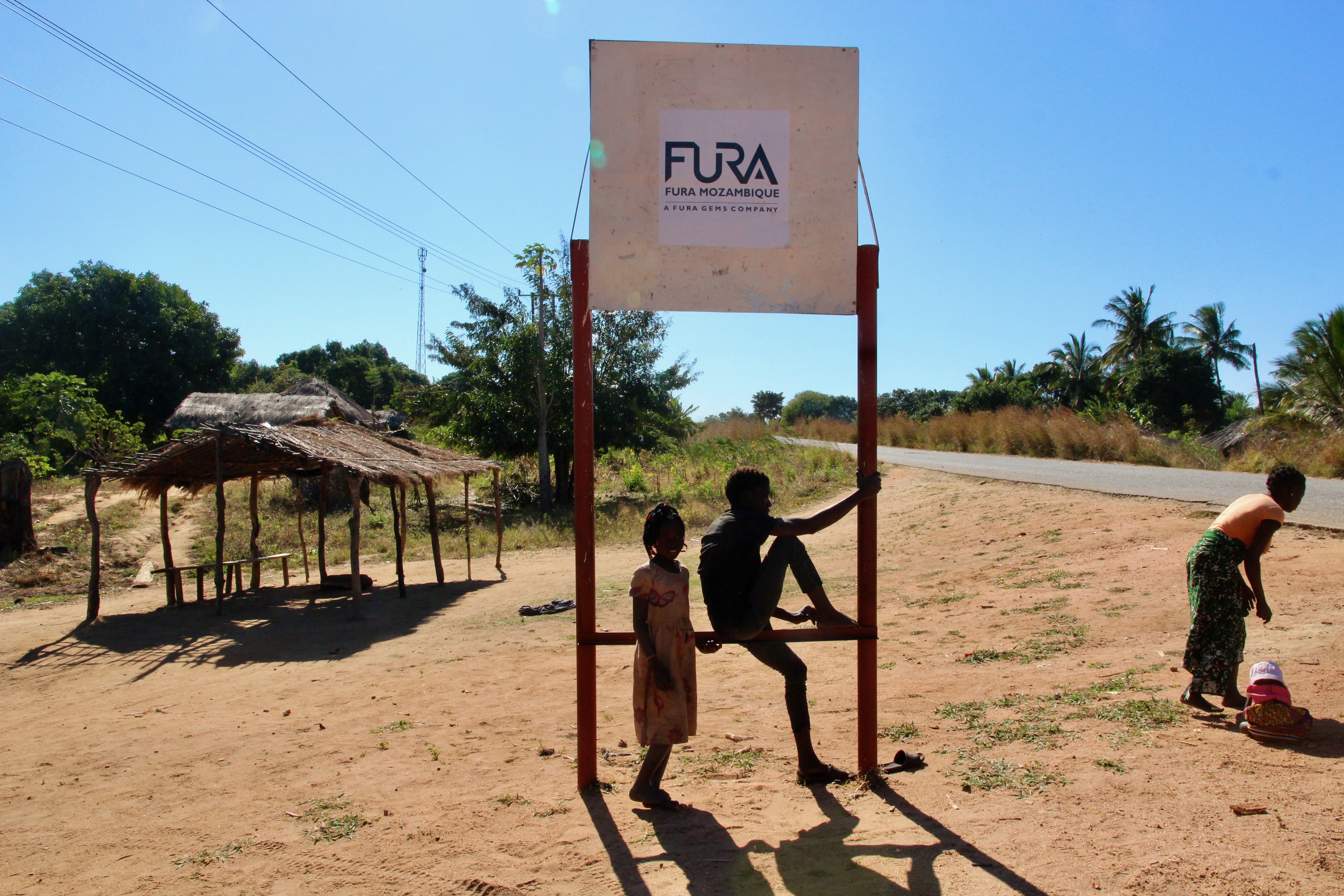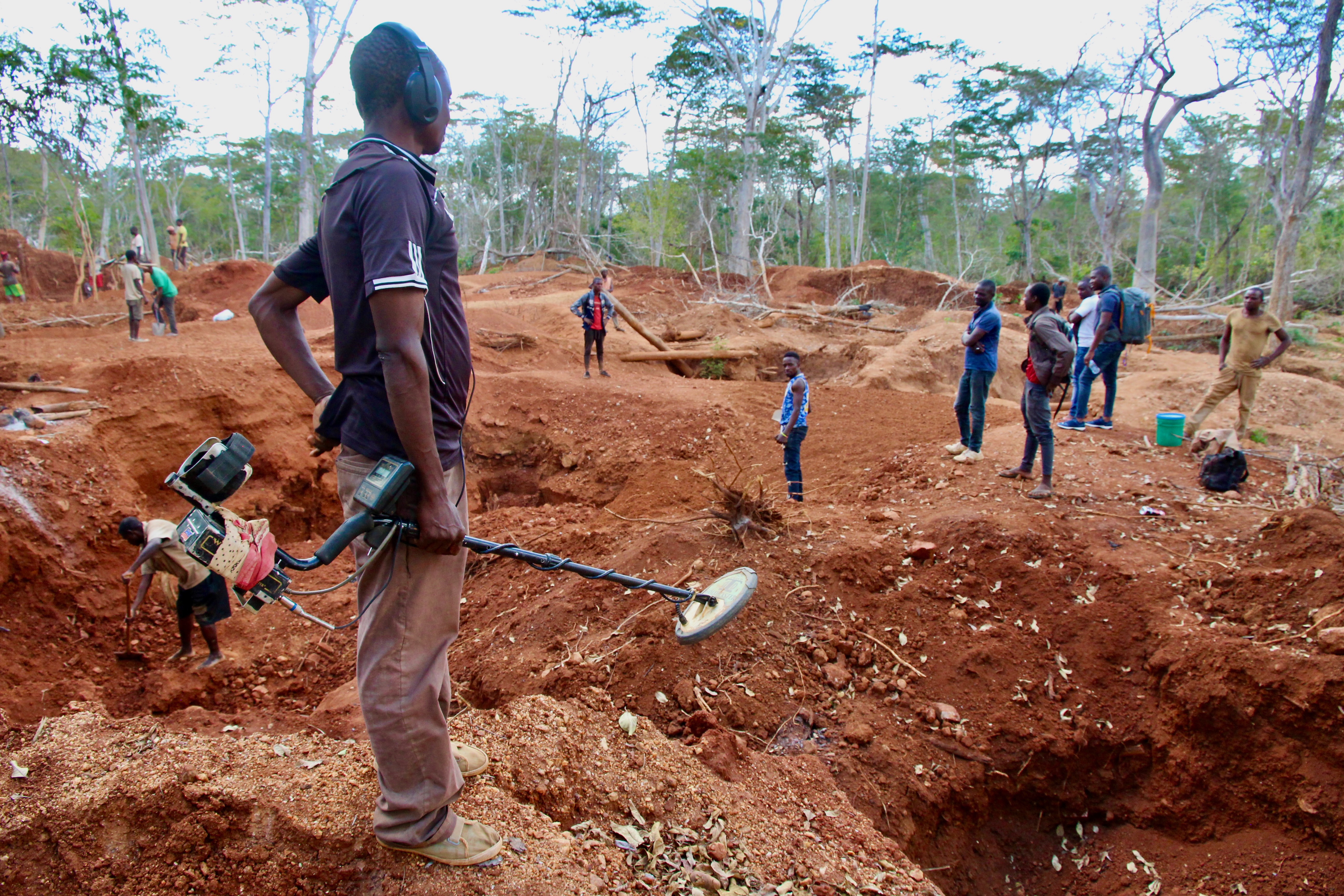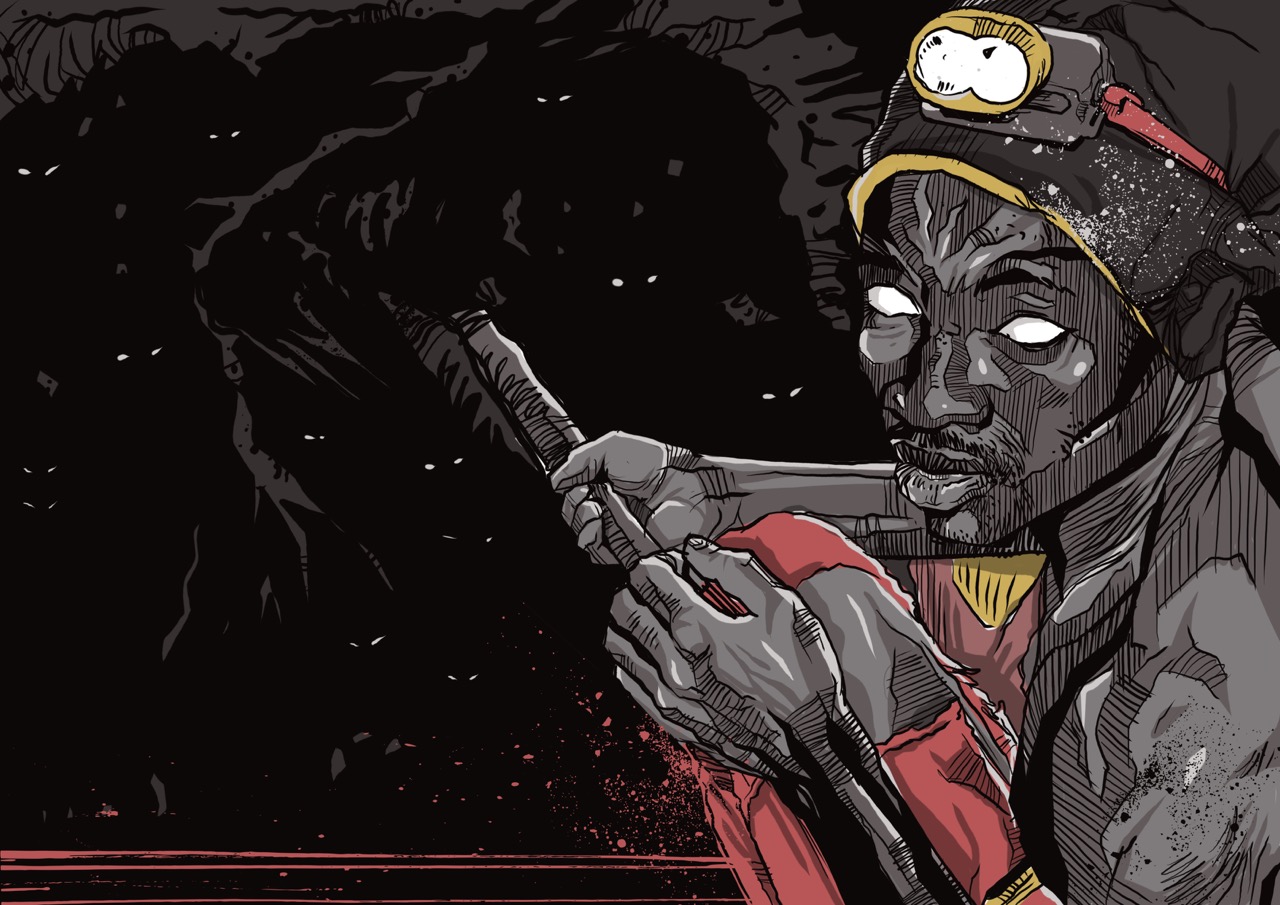In spite of government policies supposed to assist community-based mining, villagers who had hoped to explore “the wealth beneath their feet” were “cheated” out of their concession again. The third and final instalment of our investigative series on small-scale mining in southern Africa looks at how a ruling party says one thing, yet does another, in Cabo Delgado, Mozambique.
According to Mozambique’s Ministry of Natural Resources and Mining, community-based artisanal mining “is an activity that contributes greatly to the employment in rural areas as well as to the development and the socio-economic status of the respective communities.” Therefore, the Ministry adds when asked about its policies by ZAM, “the government has developed actions aimed at assisting” the sector. It mentions “ongoing legalisation” of local mining associations, “designated areas”, and training and resource distribution among these actions.
However, in the country’s mineral-rich province Cabo Delgado, home of an estimated 125,000 out of the country’s 800,000 artisanal miners, very few of such actions have ever been observed. This stands in stark contrast to commercial concessions, including, according to the Ministry, “currently fourteen companies with mining contracts to exploit various resources, 90 companies who are carrying out prospecting activities, and 45 companies with exploration licenses, of which nine are in the production phase.”
Recent land grabs from two artisanal mining associations by yet another powerful coalition between mining companies and a government-linked entity indicate that any assistance to artisanal miners may still be a long way off.
Garimpeiros
One afternoon, in a village yard in ruby-rich Namanhumbir, a spread-out village of about 6,000 inhabitants close to the capital Montepuez in Cabo Delgado, three men reminisce about their scars. 39-year-old Júlio César Machava, short and thin, says that, up to 2014, he wasn’t an artisanal miner – garimpeiro, they say here – but a food and drinks seller. He had been providing cooldrinks, beer and cooked food to fellow villagers who were digging for rubies in the area, when, on a certain fateful day in that year, security men working for MRM Gemfields (headed in Mozambique by prominent governing Frelimo party member Raimundo Pachinuapa) destroyed his stall. The act was part of a full-blown attack on the garimpeiros who, according to the mining company, were intruding on MRM Gemfields mining concession land.
The attackers didn’t distinguish between garimpeiros and others, says Machava. The nacatanas – machetes, their nickname – also raped his wife. “I had come back from buying merchandise when on the road I heard there were problems in the area. I dropped my food stuffs, and carefully approached my stall. Then I saw nacatanas raping my wife. As I was thinking about what to do, I was grabbed and beaten too. They burned my stall, my merchandise, my generator, speakers, DVDs, pots and cake tins. I lost it all. I became an artisanal miner that day. Ever since I have prospected for rubies in Macaria, for aquamarine, and tourmalines in Ocua de Ouro.”
“There was never any other job”
Jacinto Armando Baquite (31), from the same village, doesn’t know exactly when he became a garimpeiro, but he has been one for as long as he was old enough to work; his strong and tall appearance fits someone digging deep holes in tough, dry land all day long. “There was never any other job. And you don’t need experience to do it, you just need to take the risks. Nacatanas and police, detention, or getting buried in the pits when they cave, landslides, diseases.”
A third man in the yard, Isidro Luciano Cemente (31), saw his friend, one of four with whom he started out as a garimpeiro, killed by nacatanas who had captured the four. “I was tortured, they tied me to a tree and beat me. My left arm was badly broken. I don’t have strength in it to this day.”
Artisanal mining could help communities
Supporting and formalising artisanal mining would be good for communities, says spokesman Carlos Dias of the local economic development NGO ADEL (Agência de Desenvolvimento Econômico Local, agency for local economic development). According to ADEL, the average miner’s income of around 5,000 Metical (US$78) per month already pays for school supplies, construction and rehabilitation of houses, solar panels, water bore holes, mobile phone airtime and the purchase of motorcycles, indispensable on the rough terrain in the mining areas in Cabo Delgado. This development stands out in a landscape where millions of dollars in tax payments by commercial mining companies have not adequately been used by the provincial government to develop the region. With support for artisanal mining, says Dias, much more could be done, since “you could tax the sector, apply a payer-polluter principle, and look at accountability for environmental crimes and reforestation [in areas where vegetation has been cut to make way for pits].”
The Namanhumbir miners I speak to all say they would jump at an opportunity to formalise their operations. Besides tools and training, formal status as an association would also mean “having the means to properly negotiate with our buyers. Now we just have to accept whatever they offer.” “But there is no such initiative,” says a fourth man in the yard, Domingos Alexandre Marciano. “The government people sometimes come here for meetings [to discuss community mining legalisation], but we really still don't know how [we are supposed to be] working. No association works here.”
There was one that almost did, though, in this very Namanhumbir. Or rather, there were two.
After a brief period of ownership, they are now landless again
The associations Armando Emiliano Guebuza (AAEG) and 4th October were two out of the three artisanal mining associations which were, according to data from local economic development NGO ADEL, the only ones ever to achieve legal status among eleven associations (totalling 1,378 members) in Cabo Delgado. What happened to the third one could not be ascertained, but both AAEG and 4th October, after a brief period of ruby concession ownership, are now landless again after having been sidelined by mining companies working together with a government-connected entity.
“We were cheated,” say Arnaldo Santos, chairman of AAEG, and his counterpart Afonso Quinhanja, who chairs the 4th October Association. The two had started to assemble close to 350 artisanal miners as members each when it all fell apart. “They made us sign for things we did not understand and we lost the land.”

A government consultancy and a war veteran
The formation of the two artisanal mining associations had started in 2018 among a few hundred miners in Namanhumbir. The group had had high hopes to organise all the local miners, and then start taking part in the much-valued formal commercial ruby auctions in the province, the proceeds of which result in hundreds of million US$ per company per year. After the legalisation had been granted by the province, each of the two associations was concessioned a 250 hectare “designated area”, they say. They were then advised to enter into a joint venture with partners who would contribute financing and management expertise. “We partnered with a local company called Kukwira, who had offered to finance our project, and in return we gave them 70% of our shares,” says Santos.
According to its website, Kukwira is a “government consultancy” with officers in Sommerschield, an elite suburb in Mozambique’s capital Maputo. Press reports about mining in Cabo Delgado have mentioned Kukwira subsidiaries -Kukwira Gold and Kukwira Minerals- as active in the area, but, save for the Sommerschield address and general website, the mining companies appear to have no local addresses or online presence. Asked if they remember the names of any Kukwira representatives, Arnaldo Santos and Afonso Quinhanja say they don’t and explain that, when it came to partnerships, they simply relied on a locally well-known personality: Luis Crisanto Nantimbo, who was linked to ruling party Frelimo and was also a decorated veteran of the liberation war. Nantimbo, they say, provided all the necessary connections and information for the associations. “He had become a member with us, since he was from here, from Montepuez. He was at all the meetings.” Nantimbo also had a shareholding of his own: in mining company 1 de Maio, which partnered with Kukwira in a number of other ventures.
Another partner invited for help was Gemrock, a commercial company with headquarters in India. The result was a company called Namanhumbir Limitada, officially registered as Moz Gems Montepuez.
But the financing didn’t come, and neither did equipment or training. In 2021, according to Santos and Quinhanja, Kukwira and others “without consulting the community” sold the concession to Canadian-owned Fura Gems, which had become increasingly active in the area. Since 2018, Fura had taken over concessions previously owned by the Australian Mustang and UK-based Regius ruby mining companies, the latter chaired by former governor and public works minister Felizio Zacarias.
Shares for cash
It is a long-standing practice in Mozambique for ruling party politicians to help allocate licenses to foreign mining companies in exchange for shareholdings and directorships (see “The mining licenses are for the generals”). In the case of ruby giant MRM Gemfields, the London-based company entered Mozambique in a partnership with ruling party member Raimundo Pachinuapa, the son of a liberation war general. Fura also boasts “local partners” but has given no details of the principals in these partnerships.
“If we didn’t sell, we would lose both the money and the land”
As they recall the events of 2021, Santos and Quinhanja narrate that the local mining associations were told by their partners in the joint venture that “the land was small and we should sell our shares to Fura so that the mining could take off.” A cash sales price of US$4,700 was offered, with another community benefit of two tractors, but, say the two chairmen, they were not aware that it meant that there was no longer going to be any joint mining in the community. “They told us that if we didn't accept we would lose the money as well as the land. We were pressurised. It was just sign, sign, sign.” The two men point to their well-connected local member, mining shareholder and Frelimo war veteran Luis Crisanto Nantimbo, as the one who did most of the pressurising. “He manipulated information to convince us,” says Santos. “He also
The sale to Fura was subsequently registered in the Mozambican Government Gazette which noted that, for the purposes of the registration, both partners in Moz Gems Montepuez, Kukwira as well as the artisanal associations [1], had been represented by a businessman called Chandra Shekhar Singh.
According to his LinkedIn profile, Chandra Shekhar Singh is the Managing Director Africa at Fura Gems. “We didn’t even know this Mr Chandra Shekhar,” Santos and Quinhanja say.

Power of attorney
Asked to comment on how a buyer, Fura, upon registration of the sale, now also represented the seller, a spokesperson for Fura Gems said that “as part of the signature of the acquisition of Namanhumbir (Ltd) [Moz Gems Montepuez] by FURA, FURA requested that Kukwira provide Power of Attorney to one of its representatives (Mr Chandra Singh) in order to ensure that all required post-acquisition tasks (such as official registration of the transfer of the shares and payment of required registration fees) are indeed undertaken (a similar Power of Attorney was also requested by FURA from the 4th Oct. Association). This is why Mr Chandra’s name appears as it does in the applicable company registry extract you have provided.”
Fura provided two tractors, one plough and one trolley
Fura added that it “provided the association with 2 tractors, 1 plough and 1 trolley in order to allow its members to develop farming activity following the transaction”; that “we also provided certain jobs at our operational mine; and that “FURA is unable to comment on matters arising before its acquisition of the shares of Namanhumbir in 2021.” It further said it was “not aware what was agreed or discussed between the association, Kukwira and Gemrock prior to this. Fura did not join any partnership prior to the acquisition.” Lastly, FURA says, “as far as we are aware, Kukwira and the association were assisted on the sale by a lawyer appointed by Kukwira and the representative who signed on behalf of the association has a copy of the Agreement.”
Santos and Quinhanja, however, say they don’t know of a lawyer being present, and that they also don’t have a copy of the sales agreement. Both point to their “finance” partner Kukwira and Luis Crisanto Nantimbo as the ones who could provide more information.
Headquarters in Sommerschield
When asked for comment, Nantimbo states that he knows nothing about the sale of the concession to Fura and refers all queries to Kukwira. “Kukwira is in Maputo, it's not my company,” he says in a telephonic interview. “I don't have a stamp from the associations; the respective presidents of the associations are the holders of the stamps. I also wasn't at that stock sale for Fura and I did not receive anything from Fura. I don't know anything. I am a simple member of the association.” He advises ZAM to talk to “Engineer Octavio at Kukwira headquarters in Sommerschield, Maputo, who can clarify everything,” then adds that he does not have Octavio’s contact and that they “stopped talking a long time ago.”
At its headquarters in Sommerschield, Maputo, no one at Kukwira answers the phone for days. Once, when ZAM gets through, a receptionist promises to ask “Mr Octavio” to return our calls, but no one does. Emailed questions are also left unanswered.
“The truth is that we lost it”

As for Gemrock, the company has distanced itself from the arrangement, saying that “the transactions referred to in your letter are entirely the responsibility of FURA who are best positioned to respond to this letter. We have passed it to them through their management and we hope they will contact you if they have not already done so. We remain open to scrutiny for our activities which are done in a transparent and ethical manner and observing the laws of Mozambique at all times.” (That Gemrock itself did not own any shares in the joint venture, and could therefore not have sold these, is also confirmed by Fura in an initial response, which explains that “as far as we understand, prior to our purchase, Gemrock had a mining operator’s agreement with Namanhumbir, but Gemrock did not own any shares [in the joint venture].”)
Santos and Quinhanja, as well as another association member who did not want to be identified, say they are still coming to terms with the loss of their project. “We have had nowhere to turn to. No one advised us. Among us, some members still don't know what happened, still think that the concession belongs to us and hope to mine rubies. But the truth is that we lost it. We don’t do mining now. Not us, and not our children.”
Namanhumbir, May 2023
Things have at least improved a little compared to 2014, the villagers say. The nacatanas were formally dismissed as a vigilante group after videos of beatings and torture started circulating in that year, and in 2019, MRM Gemfields’s London headquarters settled a class action law suit brought by villagers who had been forcibly removed to make space for the mining concessions. But life remains hard, since their activities officially remain illegal. “They arrest you and take you to jail even if you are only cutting bamboo or sticks, which we use for our houses,” says villager Tomé Sabonete. “Even if you go there to ask for a job [2].” “This forest has long been a source of income for us, but now everyone is treated as a suspect of illegal mining, even if you don't carry a pickaxe,” adds Carlos Armando. “Cars pass by taking garimpeiros to the police station every day.”
The Ministry does not receive complaints
Asked for its response to the complaints from the artisanal miners ZAM spoke to, the Ministry of Mining and Mineral Resources in Mozambique said that it does “not receive reports of complaints about our performance.” In response to reports that powerful individuals in government and the ruling party have unduly benefited from mining to the detriment of the community, the Ministry only stated that “mining activity in Mozambique is governed by mining legislation and all citizen/investor [activity] operates in accordance with it.”
Follow-up questions sent to Minister of Mines and Natural Resources Carlos Zacarias, asking specifically about the government’s progress in implementing artisanal mining policies, and also asking how the Ministry can ensure that tax and royalties paid by commercial mining companies will benefit the region, were left without response. WhatsApp messages sent by ZAM to the Minister, asking for responses to the letter, were blue-ticked by Zacarias but also remained unanswered.
(1) Whether the two associations were always correctly referred to in the available documentation is doubtful. The associations themselves say they were both part of the joint venture, while the Government Gazette only mentions AAEG, and Fura in its communications refers to 4th October.
(2) Rather than working as “illegals”, and if they cannot have an association, the interviewed miners say they would also gladly work at one of the commercial companies. “But they don’t hire us. They say we are illiterate and unskilled. They take people from Maputo.”
With ZAM research unit input from Marnix de Bruyne and Evelyn Groenink.
This article has been updated to correct the name of the spokesperson for the NGO Adel, Carlos Dias.
Read all the investigative articles in this series:
The Wealth Beneath Their Feet | Transnational Investigation
Zimbabwe | Southern Africa’s Mining Scars, Part 1
Zambia | Southern Africa’s Mining Scars, Part 2


